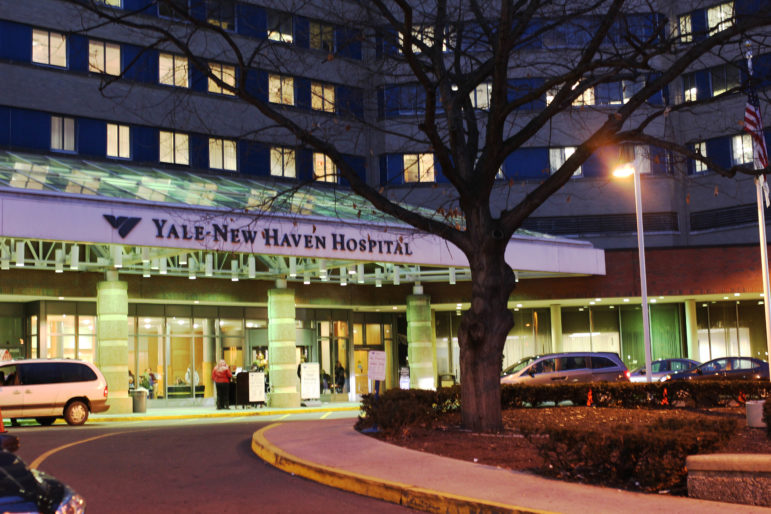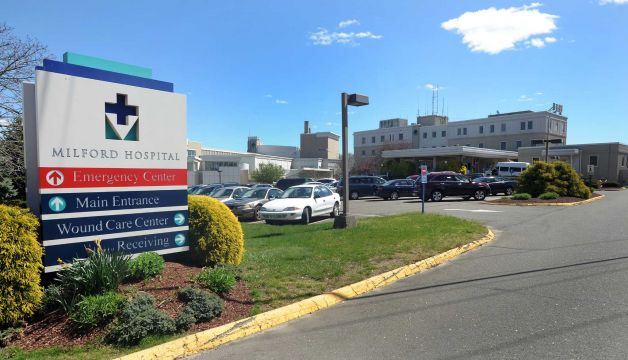By Cara Rosner
Connecticut hospitals reported increases in patients suffering from pressure ulcers, as well as serious injuries or deaths associated with falls and burns in 2017, compared to 2016, according to a new state report.
Overall, the total number of “adverse events” reported by hospitals dropped from 431 in 2016 to 351 in 2017, a 19 percent decline, the Department of Public Health (DPH) said. But most of the decline was due to the elimination of two categories in 2017: serious injuries or death resulting from perforations during open, laparoscopic or endoscopic procedures; and those resulting from surgeries. Together those categories accounted for 72 adverse events in 2016.

Yale New Haven Hospital reported 62 adverse events, the highest number among acute-care facilities.
The reporting requirement for the two categories was eliminated after a work group of the Quality in Health Care Advisory Committee concluded that the vast majority of perforations that occur during some procedures aren’t preventable, and that serious injuries or death resulting from surgery are already better captured by other categories, the DPH report said.
There were 208 reports of Stage 3, Stage 4 and unstageable pressure ulcers in 2017, up from 186 the year prior. Falls increased from 74 to 84, patient death or injury associated with a burn rose from four to eight; and serious injury or death associated with intravascular air embolism rose from zero to two.
In 2017 several categories showed improvements: surgeries performed on the wrong site dropped from 18 to 10; the wrong surgical procedure performed on a patient fell from six to three; and the retention of a foreign object in the patient after surgery dropped from 20 to 17. Medication errors dropped from seven to four.
Connecticut hospitals began a series of “high reliability” initiatives six years ago, intended to focus more on patients’ perspectives and improve care and outcomes, and that work continues, said Dr. Mary Cooper, chief quality officer and senior vice president for clinical affairs at the Connecticut Hospital Association (CHA).
“We’re happy overall that we’re showing some progress in various areas,” she said.
Over the past year, Cooper said, high reliability efforts have focused on educating and training hospital workers in self-care to help them in turn better provide care to patients, and bedside efforts to get patients and family members more proactively involved in patients’ care.
But Lisa Freeman, executive director of the Connecticut Center for Patient Safety, sees little improvement. If you consider the two categories no longer included in the reporting, there were only eight fewer adverse events in 2017 than in 2016, Freeman said.
“That’s not a change. It’s just reflective of no improvement in my mind,” Freeman said. “There are still far too many medical harm events. And these aren’t minor ones, these are ones resulting in death or substantial injuries. This is very discouraging, actually. We’ve got to look as to why we continue to have this level of harm.”

Ctpost.com Photo
Milford Hospital’s rate was 30.2, based on 100,000 in patient days.
Even as hospitals work to reduce adverse events, the events keep happening, Freeman said. “We’re doing some good things, [but] we need to look at why are they still failing to cut down on medical harm events.”
The number of sexual assaults reported, which had surged to 24 in 2016 compared to previous years, dropped to five in 2017 — due in part to a change made last January in guidelines for reporting sexual assaults that clarified what constitutes a “substantiated allegation,” according to the DPH report.
“These numbers [under the new definition] are more accurate,” Cooper said.
The most common adverse events in 2017 were Stage 3, Stage 4 or unstageable pressure ulcers, which accounted for 59 percent of all events. The pressure ulcer number has been on the rise since about five years ago when DPH added unstageable pressure ulcers to the tally, according to Cooper. The term “unstageable” includes skin that is at risk of breakdown, even before it reddens and becomes a Stage 1 pressure ulcer, she said. Various factors can affect patients’ risk for pressure ulcers, including whether they smoke or have diabetes, she said.
“We have seen the serious [pressure ulcers] really, really, really go down,” Cooper said. Identifying something as unstageable, she said, “allows us to take preventative measures before it starts to evolve into ulcerated skin.”
The majority of adverse events in 2017 (296, or 84 percent) occurred at acute-care or children’s hospitals. Slightly more than half of events (188, or 54 percent) occurred among patients aged 65 and older, the report said.
As expected, some of the state’s largest hospitals reported the highest number of total adverse events: Yale New Haven Hospital, 62; Bridgeport Hospital, 32; Hartford Hospital, 24, and St. Francis Hospital and Medical Center in Hartford and St. Vincent’s Medical Center in Bridgeport, 20 each. Stamford Hospital reported 18.
The hospitals with the highest rates of events based on inpatient days were Milford Hospital with 30.2 per 100,000 patient days; Bridgeport Hospital, 29.4; Stamford Hospital, 24.7; Norwalk Hospital, 22.5; St. Vincent’s, 23.9, and Bristol Hospital, 23.7. Yale had 14.4 and Hartford reported 10.3.
Among the 28 acute-care hospitals, three reported zero adverse events in 2017: Day Kimball Healthcare in Putnam, Rockville General Hospital in Vernon, and Sharon Hospital in northwestern Connecticut.
High reliability efforts should help reduce adverse events, but more needs to be done, Freeman said.
“Nobody wants to see these numbers,” she said. “These are big problems and we really owe it to every patient and every person in Connecticut to have this at the very top of our concerns.”
Support Our Work
The Conn. Health I-Team is dedicated to producing original, responsible, in-depth journalism on key issues of health and safety that affect our readers, and helping them make informed health care choices. As a nonprofit, we rely on donations to help fund our work.Donate Now

